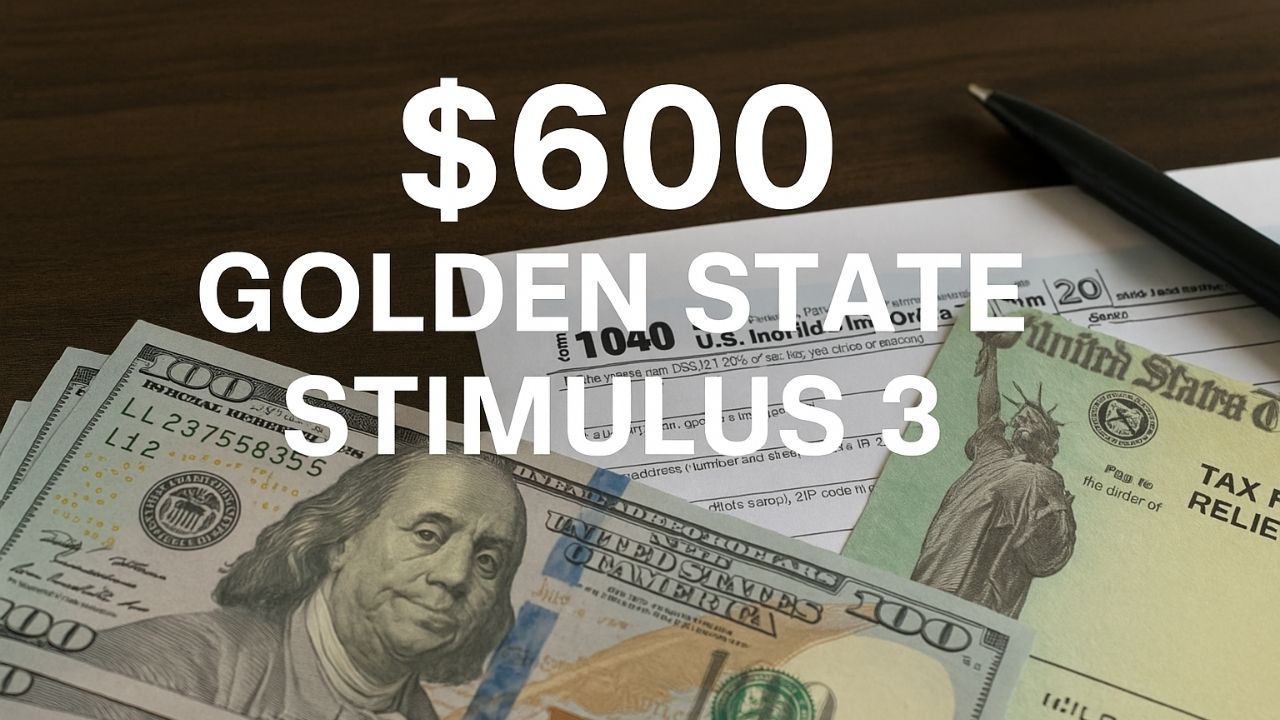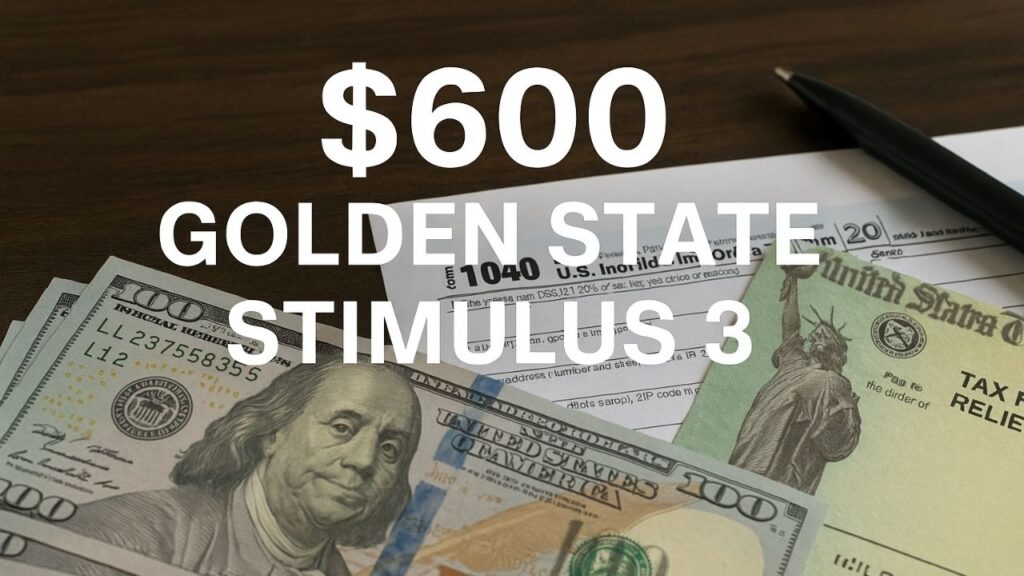In 2025, many California households are still managing the lasting effects of pandemic-era inflation, high rental costs, and soaring prices of essential goods. Given this climate, the conversation around a third round of Golden State Stimulus payments—unofficially termed GSS 3—has resurfaced. While no confirmation has been issued as of May 2025, previous rounds of stimulus set a precedent that leaves many wondering whether another $600 relief payment may be on the horizon.
The earlier versions Golden State Stimulus I and II provided direct financial support to millions of qualifying residents in 2021 and 2022. These one-time payments were designed to assist low- and moderate-income earners, including undocumented workers and individuals with dependents. The Franchise Tax Board (FTB) played a central role in administering these payments, utilizing income data from California tax returns.
With growing speculation, questions have emerged about who may qualify, how much the payment could be, and what a potential distribution timeline might look like. While the state has not released any legislation or official proposal for GSS 3 as of now, existing financial conditions may lead policymakers to reconsider another round of targeted economic support.
Structure and Scope of the Previous Stimulus Rounds

To understand how a possible GSS 3 might function, it is important to review the structure of the earlier programs. Both Golden State Stimulus I and II had distinct target groups and payment amounts, based on income, tax filing method, and family structure.
| Program Version | Year Issued | Eligible Groups | Amount |
|---|---|---|---|
| Golden State Stimulus I | 2021 | CalEITC recipients, ITIN filers | $600–$1,200 |
| Golden State Stimulus II | 2021–2022 | Individuals earning <$75,000, Heads of Household, Dependents | $600–$1,100 |
The state used surplus funds during the pandemic years to fund these relief efforts. CalEITC recipients and those filing with an ITIN were prioritized in GSS I, while GSS II broadened its reach to cover middle-income earners and families.
Anticipated Eligibility Framework for GSS 3
Although GSS 3 is currently unconfirmed, if it follows previous eligibility models, it is likely to be based on updated income thresholds and recent tax data. The general income ceiling for GSS I and II was $75,000 in California Adjusted Gross Income (CA AGI), and similar standards may be used again.
To estimate the likely profile of eligible residents under GSS 3, the following conditions could apply:
- Filing of a California state tax return for 2023 or 2024
- Residency in California for at least 6 months during the tax year
- Not being claimed as a dependent on another person’s tax return
- Demonstrated income below the $75,000 CA AGI threshold
- Status as a current California resident at the time of payment
These conditions helped ensure fairness in past rounds and may serve as a model for future distribution.
Will Golden State Stimulus 3 Be Issued in 2025?
There is currently no budget allocation or legislative directive confirming that GSS 3 will be launched in 2025. The California Franchise Tax Board has officially concluded GSS I and II, with all payments having been completed by the end of 2022. The 2025–26 state budget, as it stands, does not mention any stimulus allocation resembling the Golden State Stimulus.
However, there are early signs of public advocacy and political interest in renewing the program. Several local representatives and community organizations are pushing for state-level action to introduce new financial support, particularly for those on fixed or limited incomes. If GSS 3 is proposed later this year, its structure, timeline, and eligibility will depend on the funding strategy adopted by the California Legislature.
How GSS Payments Were Distributed
When analyzing how a potential GSS 3 could be delivered, the best reference is the structured payment system from previous years. The state used a combination of direct deposit and paper checks, both managed in coordination with tax return processing schedules.
| Payment Method | Estimated Delivery Time | Distribution Basis |
|---|---|---|
| Direct Deposit | Within 30–45 days of return processing | Bank account information from filed tax return |
| Paper Check | Within 45–60 days, mailed in ZIP code order | Based on last 3 digits of ZIP code and filing date |
This dual-system allowed the FTB to handle millions of payments in batches and minimized backlogs or errors. If a new round is approved, similar mechanisms are expected to ensure efficiency.
Immediate Steps Californians Can Take
While waiting for any formal announcement regarding GSS 3, residents are advised to take preparatory steps to position themselves for eligibility if the payment becomes available.
- File recent California state tax returns if not already done, ideally for 2023.
- Ensure banking and mailing information is up to date with the FTB.
- Monitor the Franchise Tax Board website for notifications or news updates.
- Subscribe to California Department of Finance alerts for legislative developments.
- Explore other state aid programs, including CalFresh (SNAP), rent relief, and utility subsidies that may already be active.
These small yet crucial actions can help residents avoid processing delays and remain informed about eligibility or application requirements for any future relief efforts.
Important Indicators and Next Steps
While GSS 3 is still under consideration and has not been formalized, the conditions that led to the previous rounds—budget surplus, high inflation, and cost-of-living stress—still exist in varying degrees across California. Residents who previously qualified under GSS I or II may find themselves in similar eligibility brackets again, especially if economic conditions persist.
Below is a final overview of the key differences and expected outcomes:
| Criteria | GSS I & II | Expected for GSS 3 (If Approved) |
|---|---|---|
| Income Cap | $75,000 CA AGI | Likely to remain unchanged |
| Residency Requirement | 6+ months in California | Expected to apply again |
| Payment Amount | $600–$1,100 | Estimated $600 standard, up to $1,200 total |
| Filing Requirement | State tax return filed | Likely for tax year 2023 or 2024 |
| Status as of May 2025 | Fully completed | Not yet announced |
Key Points to Remember
To ensure clarity, here are some consolidated takeaways from the article:
- GSS 3 is not yet approved, but discussions are active across political and economic platforms.
- Tax return compliance will likely be critical to qualify if the program is introduced.
- Past delivery timelines ranged from 30–60 days post-processing of returns.
- Residents should act now to update information and stay connected to official updates.
- Previous recipients of CalEITC or GSS II may once again meet future eligibility criteria.



